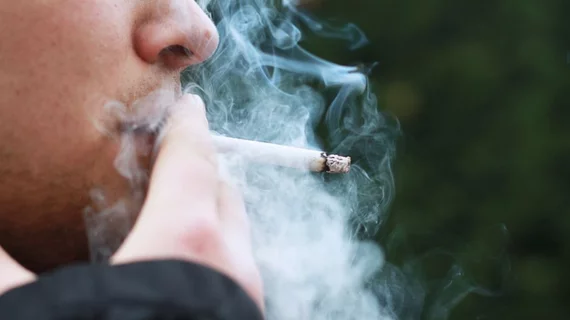Radiologists’ perspective sorely lacking in media coverage of lung cancer screening programs
Radiologists aiming to improve lung cancer screening adherence might consider reaching out to local media outlets, according to a new study published Wednesday.
During a 12-year period, only about 9% of news articles written on this topic quoted or even mentioned a member of the specialty, despite its critical role. Meanwhile, only about half of pieces published on the topic talked about eligibility criteria for screening, with just 27% discussing the need for an annual CT, experts wrote American Journal of Roentgenology [1].
The findings highlight an opportunity for radiologists to partner with the media and fill knowledge gaps about this lifesaving service.
“Radiologists are essential in the detection and management of lung cancer, yet their voices are often underrepresented in the public discussion of LCS,” corresponding author Brent P. Little, MD, with Mayo Clinic in Florida, and colleagues wrote March 15. “Beyond simply reading lung screening [low-dose CT], radiologists have been foundational in establishing, managing, promoting and maintaining LCS programs, and have deep knowledge of the supporting research, logistics, benefits and potential harms of lung screening.”
Researchers queried the ProQuest U.S. Newsstream database for their study, seeking all newspaper articles on LCS published between 2010-2022. The search turned up a total of 859 articles on the topic, including 43 items syndicated across multiple publications and the balance shared in single newspapers.
About 76% of articles in the study shared positive sentiments about lung cancer screening, compared to 21% neutral and 3% negative. Only about 28% mentioned the availability of smoking cessation programs, while even fewer explored shared decision-making (4%). Mentions of LCS costs and insurance coverage also were lacking (detailed in 33% of articles). And about 64% of those included in the study mentioned at least one benefit of screening, compared to 23% noting potential harms (typically false positives).
“By partnering with newspapers and other media channels, radiologists may improve the accuracy and completeness of information communicated to the public, dispelling myths and misinformation and promoting evidence-based practices,” Little et al advised. “By participating more actively in media coverage of LCS, radiologists may both champion public health and strengthen radiology’s relationship with the public.”

